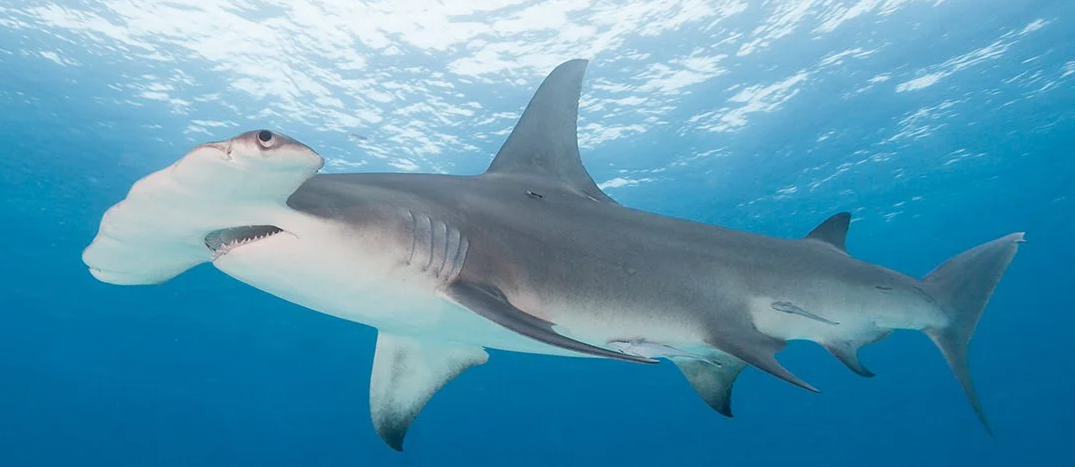
The great hammerhead shark is the largest of all hammerhead species, capable of growing up to 6 meters (20 feet) long and weighing over 449 kilograms (990 pounds). Its iconic hammer-shaped head, or cephalofoil, enhances the shark′s ability to detect prey through specialized sensory organs.
Great hammerheads are found worldwide in tropical, coastal waters. These solitary sharks are known to migrate long distances upwards of 3,000 kilometers (1,864 miles). They are distinguished from other hammerheads by their broad, nearly straight cephalofoil, which provides enhanced vision and electroreception. This specialized head allows them to detect the faint electrical signals of prey hidden in the sand. Great hammerheads primarily feed on rays, small sharks, squid, and bony fish. They have even been seen using the sides of their heads to pin down their preferred meal, stingrays, while feeding on the ray′s wing. As apex predators, these sharks play a vital role in helping to regulate marine ecosystems.
Great hammerheads also have a faster growth rate than the other hammerhead species and reach maturity earlier as young as six years old. Great hammerheads mate via internal fertilization and give birth to live young — anywhere from 6 to 42 pups — once every two years.